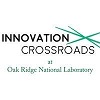
IC COHORT 4 SPOTLIGHT: AquaQuant Laboratories developing a better way to extract heat from electronics
 (EDITOR’S NOTE: This is the third article in a series spotlighting the five start-ups that comprise Cohort 4 of the “Innovation Crossroads” program operated by Oak Ridge National Laboratory with support from the Tennessee Valley Authority. Today’s focus is on AquaQuant Laboratories.)
(EDITOR’S NOTE: This is the third article in a series spotlighting the five start-ups that comprise Cohort 4 of the “Innovation Crossroads” program operated by Oak Ridge National Laboratory with support from the Tennessee Valley Authority. Today’s focus is on AquaQuant Laboratories.)
Two former college roommates who went separate ways after completing their undergraduate degrees are the Co-Founders of AquaQuant Laboratories, one of the members of Cohort 4 of the “Innovation Crossroads” (IC) program operated by Oak Ridge National Laboratory (ORNL) with support from the Tennessee Valley Authority.
Thomas Foulkes and Garrett Meyer lived in the same dormitory during their freshman year at Rose-Hulman Institute of Technology in Terre Haute, IN, then became roommates the next year. After completing their degrees – Foulkes with a B.S. in Electrical Engineering and Meyer with a B.S. in Mechanical Engineering, they went in different directions, yet remained good friends.
Foulkes continued his education, earning both an M.S. and Ph.D. in Electrical Engineering at the University of Illinois at Urbana-Champaign, while Meyer decided to pursue a career in industry, joining Black & Veatch as a Thermal Performance and Testing Lead. He quit that job a few months ago to join his college friend in co-founding AquaQuant Laboratories.
“I really crave a challenge,” Meyer told us in a recent interview. “I want to make my life the most productive it can be for society, and I saw this opportunity as a way I could learn something completely new.”
As described in the recent announcement about the teams comprising Cohort 4, AquaQuant is facilitating “the next generation of high-performance central processing units and graphics processing units required to feed the power demand for big data analytics and complex simulations. The technology creates a higher computational density by transferring heat with direct, water immersion cooling across nanoengineered coatings.”
The idea of developing a better way to extract heat from electronics was something that Foulkes says he started incubating in his free time while in graduate school. That certainly makes sense; after all, both of his advanced degrees have a concentration in power electronics and phase-change heat transfer. During both a National Science Foundation I-Corps and a VentureWell E-Team entrepreneurial program, he also discovered how much customer pain exists in terms of heat in high performance computing centers.
“Our initial focus is addressing the needs of data center customers,” Foulkes says, adding that other markets will emerge later.
During their two-year Fellowship, the Co-Founders have two areas of focus for their work. One involves research with ORNL’s materials experts to continue derisking the technology. “We want to demonstrate the robustness of our approach in a wide variety of operating environments,” Foulkes explains. The other work will be at the National Transportation Research Center (NTRC) where the emphasis will be on benchmarking the performance of integrated hardware. “We look forward to collaborating with engineers in the NTRC on overcoming obstacles for cooling compact electronics,” Meyer said.
As far as becoming part of Cohort 4, Foulkes credits Ralph Taylor, a member of the Board of Directors for the Power Sources Manufacturers Association (PSMA), for making him aware of the program. “Ralph is a great mentor and I am really grateful that he suggested we apply for this opportunity to collaborate with ORNL,” Foulkes says.
Now, both have relocated to the region to pursue the idea that is described in this YouTube video produced by ORNL.
Like what you've read?
Forward to a friend!

